From the 19th century to New Objectivity
Audio guide
Always at the Lenbachhaus

more information
"The sentence that a well-painted turnip is better than a badly painted Madonna has become a permanent feature of modern aesthetics. But the sentence is wrong; it must read: A well-painted turnip is just as good as a well-painted Madonna." This quote by Max Liebermann (1916) marks the point of departure for an exhibition at Lenbachhaus that explores what and, more importantly, how the artists of the nineteenth and early twentieth centuries painted. The presentation probes the question what constitutes "good painting" and examines the idea of the painterly from a variety of angles.
Aspects to be addressed include the pace of painting, beginner's luck, questions of attribution, bans on colors, and the quest for pure painting: Lovis Corinth, for example, created an enormous bouquet of flowers, a birthday gift for his wife, in a mere three days. When Franz von Stuck started experimenting with oil paints and the picture turned out well, he proudly labeled it "my first oil painting" right on the canvas, a pat on the back for himself as well as a message for posterity. A rapidly yet brilliantly painted unsigned portrait of a woman might be by Wilhelm Busch or by Franz von Lenbach, as both painted in very similar styles in the early stages of their careers. One would think that landscape painters were especially partial to the color "green," but oddly enough, pure green, straight from the tube, was derided as "spinach." Wilhelm Leibl, last but not least, cared only for the "how," not the "what"; his search for the "essence of painting" inspired his colleague Carl Schuch to make a radically simplified still life with leeks.
Curated by Karin Althaus
We would like to thank our lenders for their generous and dependable support:
Christoph Heilmann Stiftung
BayernLB
Münchener Secession
Gabriele Münter- und Johannes Eichner-Stiftung
Bundesrepublik Deutschland
Münchner Stadtmuseum
Doerner Institut der Bayerischen Staatsgemäldesammlungen

Carl Schuch
Bauernhaus in Ferch am Schwielowsee, 1878 ?

Wilhelm von Diez
Strauchritter, um 1875/1900

Max Slevogt
Danae, 1895

Carl Spitzweg
Wo brennts?, um 1850

Wilhelm Leibl
Knabenkopf, 1896

Hermann Groeber
Malschüler, um 1908

Wilhelm Busch
Auf der Weide, um 1885/90

Wilhelm Leibl
Kopf eines Blinden, um 1866/67
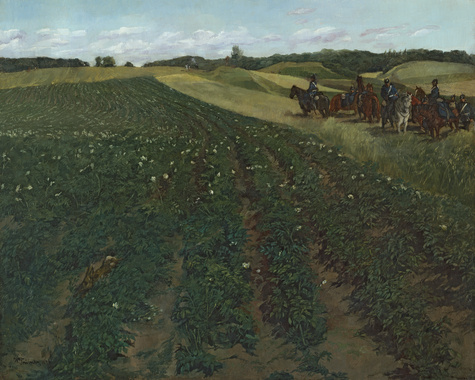
Wilhelm Trübner
Kartoffelacker bei Weßling in Oberbayern, 1876

Carl Schuch
Männliches Bildnis, undatiert

Franz von Lenbach
Hüterbub auf einem Grashügel, um 1859
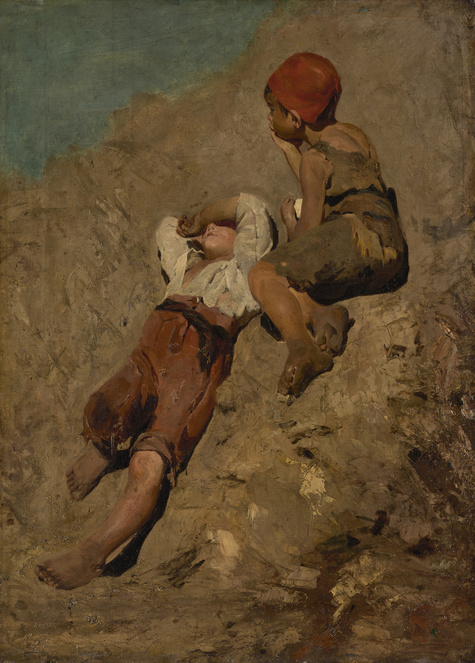
Franz von Lenbach
Zwei Bauernjungen an einem Abhang, 1859

Carl Spitzweg
Einsiedler und Teufel, um 1870

Lovis Corinth
Der Walchensee, 1919

Lovis Corinth
Hymnus an Michelangelo, 1911

Wilhelm Busch
Landschaft, um 1890

Franz von Stuck
Die Wilde Jagd, um 1888

Lovis Corinth
Der Walchensee bei Mondschein, 1920

Ludwig Willroider
Viehweide bei Morgenstimmung, 1872

Johann Sperl
Wiese vor Leibls Atelier in Aibling, 1893

Eduard Schleich der Ältere
Oberbayerische Ebene mit heimziehender Schafherde, um 1860/1870
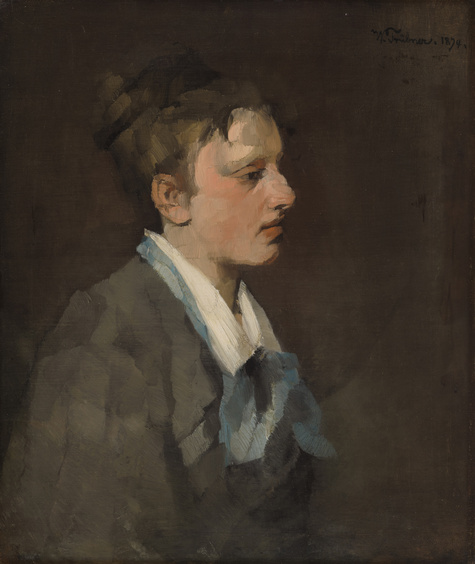
Wilhelm Trübner
Brüsslerin mit blauer Krawatte, 1874

Albert Weisgerber
Pariser Café, 1906

Karl Haider
Katharina Haider, 1875

Wilhelm Trübner
Linde auf Herrenchiemsee, 1874

Emilie von Hallavanya
Selbstbildnis, um 1905 (?)

Eduard Schleich der Ältere
Sandgrube an der Schleißheimer Allee, um 1860/1870

Albert Weisgerber
Im Münchner Hofgarten, 1911

Max Slevogt
Selbstbildnis mit schwarzem Hut, 1913
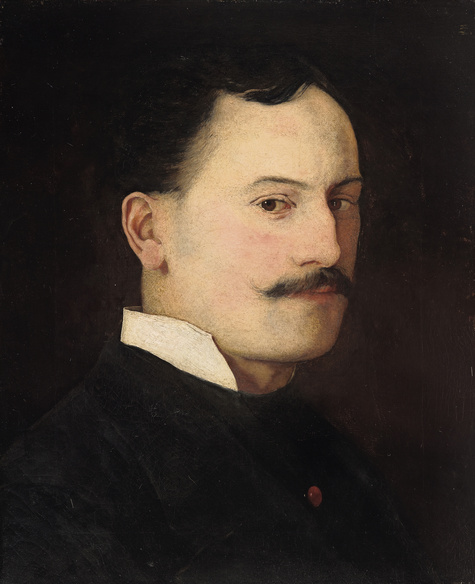
Wilhelm Leibl
Der Maler Julius Bodenstein, 1876
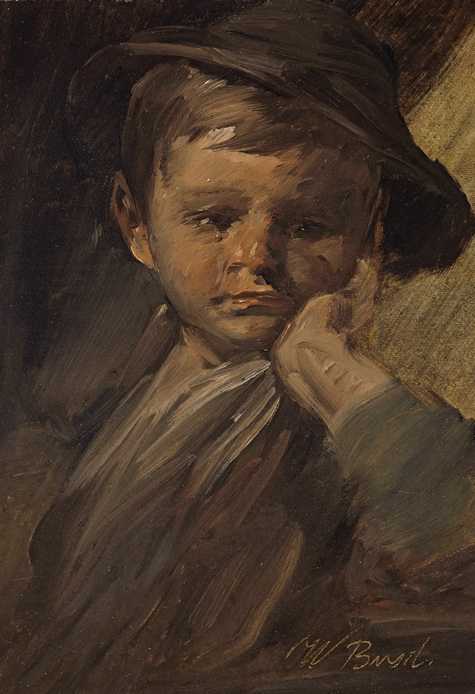
Wilhelm Busch
Bildnis eines Knaben mit großem Hut, um 1871/1872
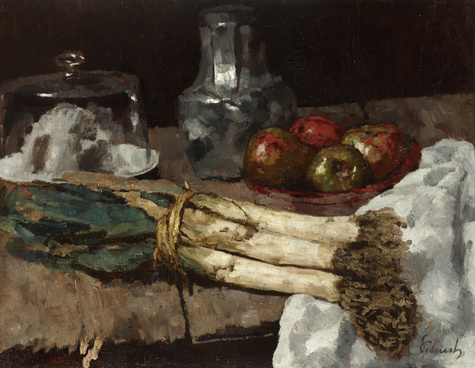
Carl Schuch
Stillleben mit Porree, um 1886/88

Lovis Corinth
Der Pianist Conrad Ansorge, 1903

Lovis Corinth
Selbstbildnis mit Skelett, 1896

Max Liebermann
Amsterdamer Waisenkind, 1881
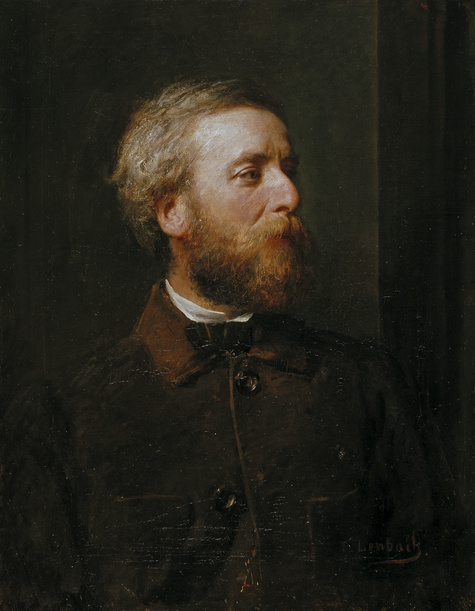
Franz von Lenbach
Arthur Georg Freiherr von Ramberg, um 1862
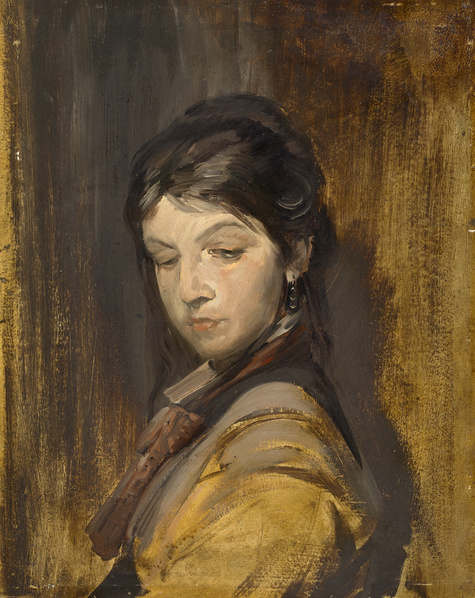
Franz von Lenbach
Unbekanntes Mädchen, 1877?

Franz von Lenbach
Bauernjunge beim Brotessen in der Stube, 1856/58

Theodor Alt
Bildnis eines Revolutionärs, 1. Hälfte 1870er Jahre

Wilhelm Leibl
Frau Anna Gentz, um 1868